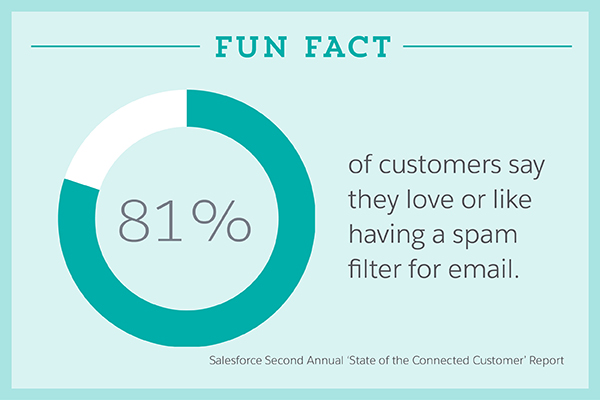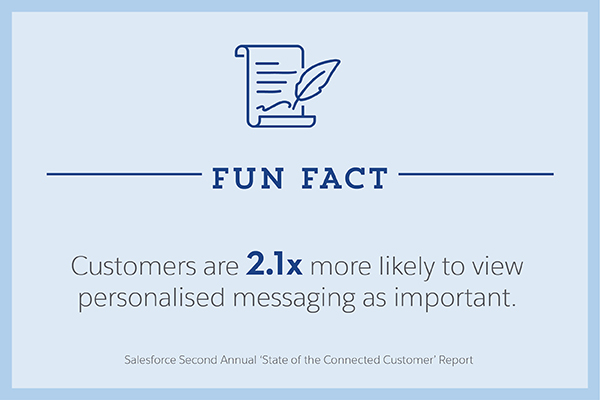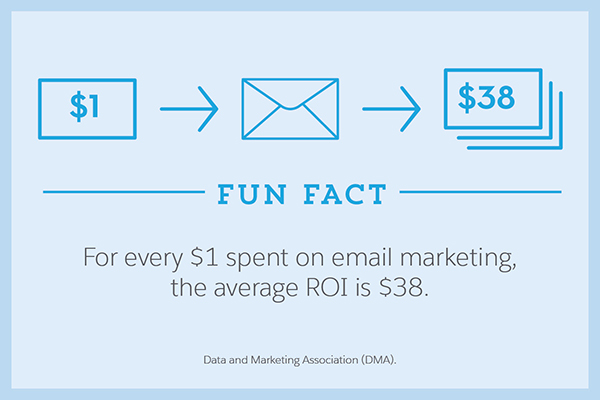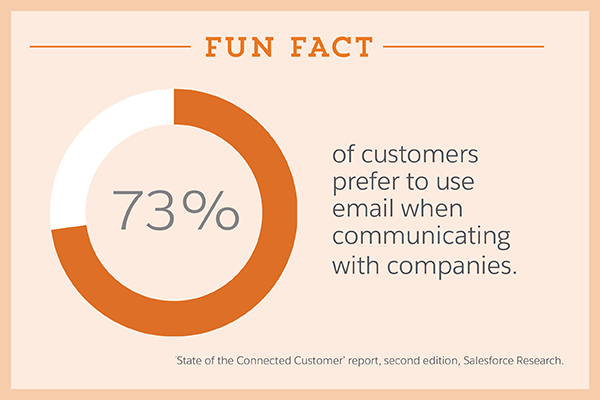Get your FREE 30-day trial.
Start by selecting a product:
With outstanding customer experience at the heart of any successful marketing strategy, marketers need to be wary of these common pitfalls that can undermine customer relationships before they’ve even got off the ground.
Working with thousands of companies over the past 19 years has helped us understand why some succeed and others fail. It all comes down to creating one-of-a-kind customer relationships. But delivering a personalised, cross-channel experience at every step of the customer lifecycle can be challenging.
According to the 2016 State of the Connected Customer report, 80% of customers say that experience is as important as products or services, but 51% believe that most companies fall short. To ensure a great customer experience, marketers must deliver digital experiences that are highly relevant, timely and tailored to their customer needs. And to do that, they need to avoid six common mistakes while creating 1-to-1 customer journeys.
Don’t underestimate the power of setting a SMART (specific, measurable, achievable, relevant, time-bound) goal to define your path and determine your success.
To set your first goal, get in that New Year’s Resolution frame of mind – define the point you want to reach, then figure out each step of how you will get there, breaking down that lofty goal into manageable, measurable steps you can tick off as you go. A high-level goal will direct the development of your journey and help you focus your efforts, and can be refined as you learn more.
From there, define exactly what you hope this journey will achieve. Your SMART goal will also help you to clearly define success post-launch. For example, if your goal is to launch a new product, but you also need to continually acquire additional customers after launching it, a SMART journey goal might be to acquire 25% more new customers for that product in each quarter after launch.
Take a tailored approach when thinking about your audience, as the goal of building a customer journey is delivering a 1-to-1 message.
Understand exactly who you are speaking with and where they are in their lifecycle with you.
Decide if you will use a broad audience (all bank customers) or a narrow audience (all new high-value bank customers in Melbourne) to show how participation in the journey will meet your mutual goals and set a solid foundation for the journey itself.
Audit the current customer experience. Be objective and brutally honest — and remember that your customers are human.
Taking the time to understand what matters to your customers and what they want from you (and what will make them love their spam filter) will yield high rewards.

Dig a little deeper and see if there are any other accessible data points that you can use within the journey to personalise elements. In addition to an email address, look for post code, gender, last purchase date, preferred location and so on. So, how do you go about collecting additional data?
Check the data you have today, evaluating its quality, completeness and accessibility. Every data point you access will add value and richness to the journey.
Document the data you need. Does it exist but is currently inaccessible, or do you need to start collecting it?
Envision the data you want. Dare to dream about the hard-to-access data points so you can personalise every message.

Both in-journey content (delivered in the message itself) and out-of-journey content (which a subscriber would navigate to with a click) can be extremely powerful when used in tandem.
How do you make sure you have both? Audit what content you have available today, plan what you need to create in the short-term, and create a strategy for future content that will delight your audiences. Knowing exactly what you want your customer to do and keeping a laser focus on calls to action (and resulting landing pages) will allow you to be helpful, supportive and resourceful to your customers along their journeys.
It’ll also mean you’re focusing your energy where it should be – actions that will generate ROI.

Instead of messaging your audiences in the channel you want them to be on, identify the channel they are already on and want to communicate with you on at different moments, and engage them there. Ask yourself: are your customers desk-based and completing a web form? If so, then using email makes sense. However, if they are on the go and seeking brief information quickly, SMS may be appropriate.
Consider how ride-sharing service Uber uses different channels for pre, during and post-ride messaging: a combination of push, SMS and email. Now consider how it would impact your journey if you received the ‘Your driver is two minutes away – track them in the app’ message via email.
Tailoring channel use to both audience preferences and audience actions creates one seamless engagement path for their customers, no matter what channel the customer is on.

Once you understand your goals, audience, relevant data points and strategic content, you will be ready to create a customer journey – but remember not to bite off more than you can chew all at once!
Think of a successful customer journey as having three versions:
Crawl: using what you have available today
Walk: using what you can access with just a little elbow grease
Run: your ‘blue sky’ vision
If you currently have a monthly EDM and limited ability to segment your audiences, your crawl version shouldn’t be a multistep, multichannel drawing that spans five whiteboards. A great starting point could be a single automated touchpoint with two reminders for non-openers.
Similarly, if you already have that multistep, multichannel journey up and running (good for you!), your run version shouldn’t be limited to data and content from the past, but should be stretched to incorporate real-time data and predict future customer needs.
The best journey mapping mindset allows for testing, learning and iterating while actively servicing your customers.
Effective email is often the core of a great customer journey, but it doesn’t just happen. It takes data-driven decisions as well as a thoughtful touch: a perfect blend of data and emotion. To master this balance, we’ve assembled 50 tried-and-true tips to guide you.